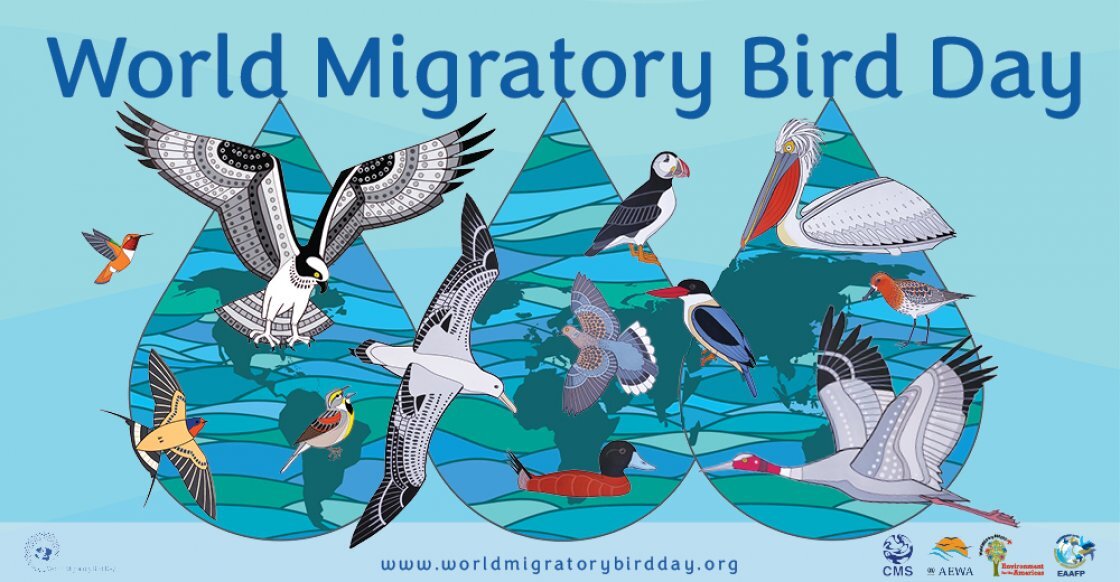World Migratory Bird Day: focus on water

TEHRAN – October 14 is the World Migratory Bird Day. This year, the theme for the day is “Water and its Importance for Migratory Bird.”
Water is fundamental to life on our planet. The vast majority of migratory birds rely on aquatic ecosystems during their life cycles.
Inland and coastal wetlands, rivers, lakes, streams, marshes, and ponds are all vital for feeding, drinking, or nesting, and also as places to rest and refuel during their long journeys.
Unfortunately, aquatic ecosystems are becoming increasingly threatened around the world and so are the migratory birds that depend on them.
The increasing human demand for water, as well as pollution and climate change, are having a direct impact on the availability of clean water and the conservation status of many migratory birds.
World Migratory Bird Day is an annual awareness-raising campaign highlighting the need for the conservation of migratory birds and their habitats.
It has a global outreach and is an effective tool to help raise global awareness of the threats faced by migratory birds, their ecological importance, and the need for international cooperation to conserve them.
Every year people around the world take action and organize public events such as bird festivals, education programs, exhibitions, and bird-watching excursions to celebrate the World Migratory Bird Day.
All these activities can also be undertaken at any time of the year because those countries or regions observe the peak of migrations at different times, but the main days for the international celebrations on the second Saturday in May and in October.
The slogan shows that water resources are very important in protecting wetlands as the main habitat of migratory birds.
World Migratory Bird Day celebrates 12 bird species in particular of which 8 find safe havens in natural UNESCO World Heritage sites.
Climate change is amplifying the impact of habitat destruction by depleting natural water systems and depriving migratory birds of vital breeding and stopover sites. These sobering examples go hand-in-hand with recent reports that reveal that the populations of 48 percent of bird species worldwide are in decline.
Birds have found their place in culture, religion, poetry, and music for a long time. So far, about 10,000 species of birds have been identified in the world.
Of course, experts believe that the same number of species has not yet been identified, but the problem is that even the existing birds have not been spared from the danger of humans so the development of urban and industrial life has caused 120 to 130 bird species to disappear in the last three to four centuries.
Even today, despite the awareness of the importance of protecting biological species, 1,200 species of birds are under threat of extinction.
Issues such as the drying up of wetlands, the increase of sediments and sewage and their entry into rivers and wetlands, climate change, and overhunting are some of the main factors that threaten the lives of birds.
In the meantime, there are a large number of migratory birds that fly long distances to spend the winter.
International studies show that the conditions of migratory birds are not suitable and they are threatened by many dangers, especially the reduction of water and the loss of wetlands.
In general, the state of the census and the state of the birds shows the deterioration of the situation of these species.
Accordingly, the world thought of saving the birds, and in line with the African-Eurasian Migratory Waterbird Agreement since 2006, World Migratory Bird Day is celebrated in order to increase global attention to the category of migratory birds and its importance.
Almost all migratory birds depend on water to travel a long migration distance and to refresh their breath on the way and finally at the destination.
During the flight, the presence of rivers, wetlands, and even small streams plays a vital role in feeding and rejuvenating them. Therefore, if these water bodies are destroyed, the lives of these birds will face a serious threat.
Wetlands are ecosystems saturated with water, either seasonally or permanently. They store water and ensure its quality, providing resilience against drought. They play a central role in sustainable development by supplying all our fresh water. More than 40 percent of freshwater fish are said to live in wetlands.
Wetlands play a major role in protecting the land against floods and the impacts of storms. They provide food and diverse habitats that support genetic, species, and ecosystem biodiversity. Wetlands play a key role in the life cycles of many species and in annual migration patterns.
Iran is rich in terms of having a variety of wetlands due to its climatic diversity. In Iran, 141 wetlands with ecological value with an area of over 3 million hectares have been identified, of which 25 wetlands are designated as wetlands of international importance (registered in the Ramsar Convention) covering more than 1.4 million hectares and four sites are biosphere reserves.
Of Iran’s 25 Ramsar sites about one-third are under pressure or in critical condition.
Unfortunately, wetlands are being degraded and lost due to pollution, overexploitation, climate change, and human population growth.
Leave a Comment